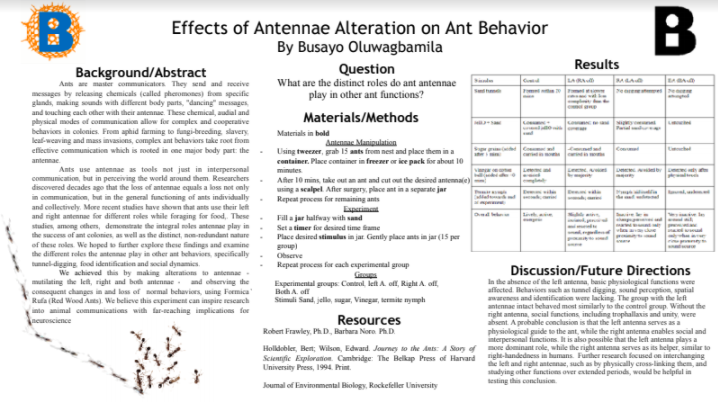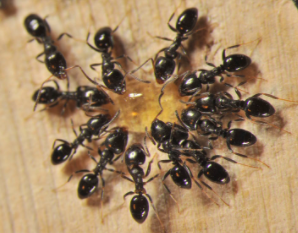
Student: Busayo Oluwagbamila
Mentor: Rob Frawley
All 2018-2019 Projects
Brief Description: By altering antennae in populations of ants Busayo tried to discern antenna-specific functions.

Abstract:
Ants are master communicators. They send and receive messages by releasing chemicals (called pheromones) from specific glands, making sounds with different body parts, “dancing” messages, and touching each other with their antennae. These chemical, aural and physical modes of communication allow for complex and cooperative behaviors in colonies. From aphid farming to fungi-breeding, slavery, leaf-weaving and mass invasions, complex ant behaviors take root from effective communication which is rooted in one major body part: the antennae.
Ants use antennae as tools not just in interpersonal communication, but in perceiving the world around them. Researchers discovered decades ago that the loss of antennae equals a loss not only in communication, but in the general functioning of ants individually and collectively. More recent studies have shown that ants use their left and right antennae for different roles while foraging for food. These studies, among others, demonstrate the integral roles antennae play in the success of ant colonies, as well as the distinct, non-redundant nature of these roles. We hoped to further explore these findings and examine the different roles the antennae play in other ant behaviors, specifically tunnel-digging, food identification and social dynamics.
We achieved this by making alterations to antennae – mutilating the left, right and both antennae – and observing the consequent changes in and loss of normal behaviors, using Formica Rufa (Red Wood Ants). We believe this experiment can inspire research into animal communications with far reaching implications.
